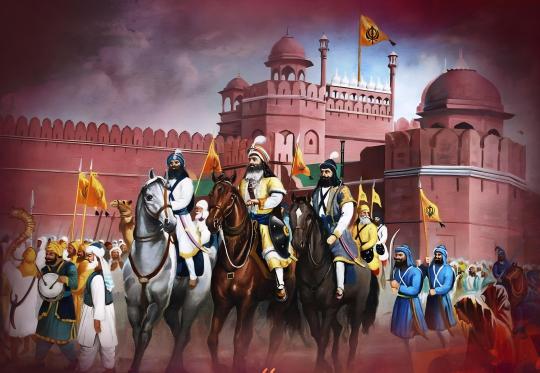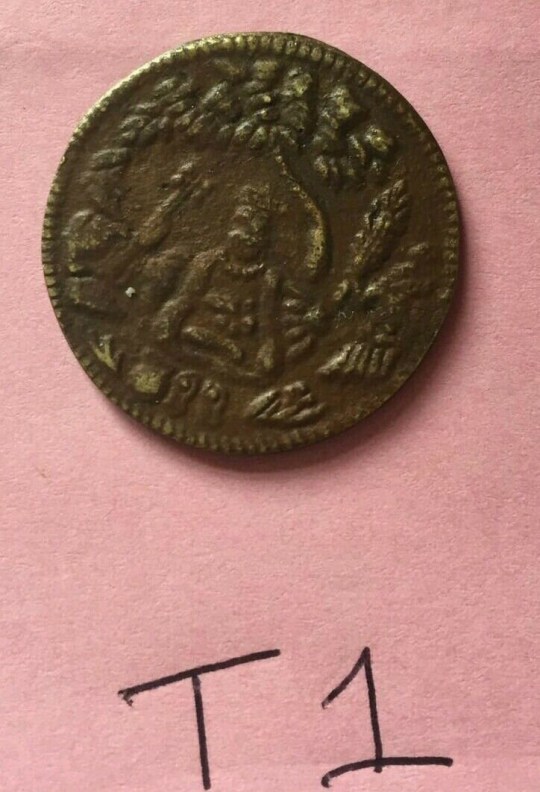#Sikh history
Explore tagged Tumblr posts
Text








Crowd watching at Darbar Sahib, by Jaskaran Singh
Darbar Sahib, or The Golden Temple is a gurdwara located in Amritsar in the state of Punjab in India. It is one of the holiest pilgrimage sites in Sikhism. The sarovar or the holy pool on the site of the gurdwara was completed by the fourth Sikh Guru, Guru Ram Das, in 1577. The gurdwara was repeatedly rebuilt by the Sikhs after it became a target of persecution and was destroyed several times by the Mughal and invading Afghan armies. Maharaja Ranjit Singh, after founding the Sikh Empire, rebuilt it in marble and copper in 1809. The Golden Temple has a square plan with four entrances, and a circumambulation path around the pool. The complex is a collection of buildings around the sanctum and the pool. The gurudwara houses a community-run kitchen that offers a meal to all visitors without discrimination. Over 150,000 people visit the holy shrine everyday for worship.
#jaskaran singh#darbar sahib#golden temple#amritsar#punjab#india#south asia#sikhism#religion#sikh#south asian#sikh history#portrait photography#street photography#ph#peoplehood#ots
95 notes
·
View notes
Text
*#आओ_जानें_सनातन_को*
*Sant Rampal Ji Maharaj

#christian quotes#daily devotional#bible reading#christian bible#faith in god#follow jesus#follower of jesus christ#i love jesus#jesusisgod#jesusislord#allah#hinduism#mental health#hindi#sikh history#sikhism#god#bhagavad gita#kuran#the bible#bible quote#bible verse#bibleverse#bible study#bibleversedaily#bible#bible scripture#church#religion
3 notes
·
View notes
Text
why-dhruv-rathee-removes-ai-generated-video-on-sikh-gurus
ध्रुव राठी: गुरुओं का बनाया AI अवतार, भड़के सिख, हटाना पड़ा वीडियो

मशहूर यूट्युबर ध्रुव राठी को सिख इतिहास पर वीडियो बनाना भारी पड़ा है. देश-विदेश के कई सिख संगठनों ने उनके वीडियो पर आपत्ति जताई है, जिसके बाद उन्हें अपने चैनल से वीडियो हटाना पड़ा. ध्रुव राठी ने 'बंदा सिंह बहादुर' की कथा नाम से एक एपिसोड तैयार किया था. इस कहानी में उन्होंने गुरु गोबिंद सिंह, साहिबजादों और अन्य सिख योद्धाओं की एनिमेटेड तस्वीरें बनाई थीं. सिख संगठनों ने इन तस्वीरों को लेकर आपत्ति जताई थी. लोग ध्रुव राठी को ट्रोल करने लगे, जिसके बाद उन्हें वीडियो हटाना पड़ा.
अकाल तख्त के जत्थेदार कुलदीप सिंह गरगज ने कहा, 'मैं ध्रुव राठी के इस वीडियो की निंदा करता हूं. इसे तुरंत हटाया जाए. SGPC को संबंधित मंत्रालय से संपर्क कर इसे हटवाना चाहिए.'
सिख संगठनों का कहना है कि ध्रुव राठी, इसे गलत तरीके से दिखा रहे हैं. उनकी मांग थी कि सरकार भी इसमें हस्तक्षेप करे और वीडियो को तत्काल हटा दे. ज्यादातर सिख संगठनों ने ध्रुव राठी की आलोचना की और वीडियो हटाने की मांग की.
पूरा आर्टिकल पढ़ने के लिए नीचे लिंक पर करें👇
ध्रुव राठी: गुरुओं का बनाया AI अवतार, भड़के सिख, हटाना पड़ा वीडियो
#Dhruv Rathee#AI-generated video#Sikh Gurus#Banda Singh Bahadur#Sikh community backlash#Guru Gobind Singh#Sahibzadas#Akal Takht#SGPC#Delhi Sikh Gurdwara Management Committee#video controversy#Sikh history#religious sentiments#YouTube video removed#Section 295A#Sikh principles#animated depiction#ध्रुव राठी#सिख गुरुद्वारा समिति#सिख गुरुद्वारा मैनेजमेंट कमेटी#सिख इतिहास
0 notes
Text
The Battle of Bhangani: The Historic Fight Over a White Elephant
#1688 battle#17th century battles#battle of bhangani#Bhim Chand#Bilaspur#bilaspur king bhim chand#epic battles of india#Guru Gobind Singh#Guru Gobind Singh Ji#hill kingdoms#Himachal history#Himachal Pradesh#historic Sikh victory#historic wars of india#Indian History#Kangra#Khalsa#military engagement#Paonta Sahib#Rajput kings#rajput warriors#Shivalik Hills#sikh history#Sikh values#Sikh warriors#white elephant prasadi
0 notes
Text
आतंकी जरनैल सिंह भिंडरांवाले: पंजाब के इतिहास का विवादित चेहरा, जानें पूरा सच
Jarnail Singh Bhindranwale: जरनैल सिंह भिंडरांवाले, एक ऐसा नाम जो आज भी भारत के इतिहास, खासकर पंजाब के सिख समुदाय और राजनीति में चर्चा का विषय बना हुआ है। कई लोगों के लिए वे एक संत और स्वतंत्रता सेनानी थे, तो वहीं भारत सरकार और कई अन्य लोगों ने उन्हें आतंकवादी करार दिया। भिंडरांवाले का जीवन, उनके कार्य और 1984 में ऑपरेशन ब्लू स्टार में उनकी मृत्यु आज भी विवादों के घेरे में है। इस लेख में हम उनके…
#bhindranwale controversy#Golden Temple#himachal police action#jarnail singh bhindranwale#kangana ranaut emergency#khalistan movement#Operation Blue Star#punjab terrorism#sikh history#terrorist Bhindranwale
0 notes
Text
ਜਿਸ ਲਾਲ ਕਿਲ੍ਹੇ ਵਿਚੋਂ ਹੰਕਾਰੀ ਬਾਦਸ਼ਾਹ ਫਰੁਖਸ਼ੀਅਰ ਦੇ ਹੁਕਮ ਨਾਲ ਬਾਬਾ ਬੰਦਾ ਸਿੰਘ ਬਹਾਦਰ ਅਤੇ 740 ਦੇ ਕਰੀਬ ਸਿੰਘਾਂ ਨੂੰ ਭਾਰੀ ਅੱਤਿਆਚਾਰ ਕਰਕੇ ਸ਼ਹੀਦ ਕੀਤਾ ਗਿਆ ਸੀ। ਅੱਜ ਉਹੀ ਲਾਲ ਕਿਲ੍ਹਾ ਖਾਲਸੇ ਦੇ ਕਦਮਾਂ ਵਿਚ ਸੀ ਅਤੇ ਇਥੋਂ ਦਾ ਮੁਗਲ ਬਾਦਸ਼ਾਹ ਬਾਬਾ ਬੰਦਾ ਸਿੰਘ ਬਹਾਦਰ ਦੇ ਵਾਰਸ ਸਿੱਖਾਂ ਕੋਲੋਂ ਆਪਣੀ ਜਾਨ ਅਤੇ ਰਾਜ ਦੀ ਸਲਾਮਤੀ ਦੀ ਭੀਖ ਮੰਗ ਰਿਹਾ ਸੀ।

View On WordPress
#1783#Baghel Singh#delhi#Delhi Fateh Diwas#diwas#fateh#Gursikh satth media#nimana#Sikh History#sikhism#Today
0 notes
Text
Panj Takht Yatra: A Spiritual Journey Through Sikhism's Five Sacred Thrones

The Panj Takht Yatra is a spiritual journey that allows you to explore the five most significant seats of Sikhism, known as the Panj Takhts, each with its unique historical and religious importance. This yatra offers an in-depth experience of Sikh faith and culture, taking travelers through crucial sites of Sikh history.
The Five Takhts of Sikhism
Takht Sri Harimandir Ji Patna Sahib — Located in Patna, Bihar, this is the birthplace of Guru Gobind Singh Ji, the tenth Guru of Sikhism.
Takht Sri Keshgarh Sahib — Situated in Anandpur Sahib, Punjab, it is where Guru Gobind Singh Ji founded the Khalsa in 1699.
Takht Sri Damdama Sahib — Located in Bathinda, Punjab, this is where Guru Gobind Singh Ji compiled the Adi Granth, the central scripture of Sikhism.
Takht Sri Akal Takht Sahib — The most renowned Takht, situated in the Golden Temple complex in Amritsar, Punjab. It is the seat of the Sikh temporal authority.
Takht Sri Hazur Sahib — Located in Nanded, Maharashtra, this is the place where Guru Gobind Singh Ji passed away.
How to Reach Delhi for Panj Takht Yatra
Delhi serves as the perfect gateway for starting the Panj Takht Yatra due to its well-connected transport system and accessibility from major international locations. You can reach Delhi by air, train, or road.
By Air: Delhi’s international airport is well-connected with airports near the Takhts, such as Amritsar, Patna, Nanded, and Chandigarh.
By Train: India’s extensive railway network allows travelers to experience local culture while traveling to key Takhts. Scenic train routes offer a blend of convenience and beauty.
By Road: Traveling by road allows you to explore more hidden gems along the way, whether by private car or bus.
The Panj Takht Yatra is an unparalleled spiritual journey through the heart of Sikhism. It provides an opportunity to connect deeply with Sikh teachings and history, offering travelers a chance to reflect on the profound legacy of the Gurus. Whether you’re looking for peace, reflection, or cultural enrichment, this yatra is a must-do for those wishing to explore the roots of Sikh faith.
Read this content piece to explore more about the life-changing journey of Panj Takht Darshan Trip from Delhi and plan your family/friends tour accordingly.
1 note
·
View note
Text
Happens here too. The US.
And I tried to address a lot of this stuff and some of the things said in my cab driver novel.
The problem it's "hard to connect" to by an industry predominantly filled with people who've never experienced that and don't understand the impact to people, character, and how much that changes personal narrative and thus back into a fictive one from that perspective.
Your entire thought process on life and risks and everything are different.
There's an expectation for certain Asian communities to fall into the model minority trap.
Also be: submissive, meek, compliant.
When I first pursued acting I saw this stereotype enforced and expected almost unknowingly by people.
Same in fiction.
It's changing now, but...it's an uphill battle.
Take for example the history of Sikhs in warfare. Used as cannon fodder by the British, well respected warriors, served in armies around the world, even WWI and WWII for America as well, not just the British. But you don't hear about that. It's something that's talked about in Asiatic circles.
With what Bruce Lee did for the Chinese community. He smashed through stereotypes and showed badassery. Chinese martial arts. A Chinese ass kicking hero. But there were obstacles.
And it's what motivated me to write a book based off things I saw and experienced and also understand - trying to address stuff I don't think people are aware of especially in fiction. And, make a narrative that actually reads in that way - the pacing, considerations, and more.
We're told to always have actiony/ACTIVE characters.
But what we forget is a lot of poc's don't have that activeness/agency in their own lives due to certain systems, expectations, and things like this. And, other concerns. So what then does that narrative actually look like? And, what does that fight and reconciliation with one's self to get that agency look like as well? I worked hard to answer that and more in The Cab Driver.
I def need to thank WaylandSmith1 and ZacTopping for reading, liking, blurbbing, and vetting the accuracy of certain law enforcement, gang, and other aspects of the novel too.
But, yeah. It's been on my mind.
#anti asian hate#poc#poc rep#poc representation#Asian communities#uphill battle#it's an uphill battle and I'm tired#Sikh history#sikh community#model minority#activeness#agency#cultural expectations#cultural experience#what does this look like in reality#novel writing#creative writing#writing books#writing fiction#fiction books#new novel#new book#work in progress#writers and writing#poc writer#perspectives#own voices#poc voices
1 note
·
View note
Photo

Rare Antique Brass Sikh Guru Nanak Sat Kartar Nanakshahi Good Luck Gift Token T1
Rare Antique Brass Sikh Guru Nanak Sat Kartar Nanakshahi Good Luck Gift Token T1
Bala Mardana Baba Nanak
Token Coin as shown in the photos.
Type: Hindu Token
Period: Not Known - used item
Country/Region of Manufacture: India
#bala mardana baba#1804 samvant#maharaja ranjit singh#singh kaur khalsa#sikhism sikhi#sikh history#vintage old ancient#antique rare#sikh 1843 token#brass coin#nanakshahi token#sat kartar coin#guru nanak
0 notes
Text
Guru Harkrishan Sahib ji’s biography and life lessons

Guru Har Krishan Sahib Ji, the eighth Guru of Sikhism, holds a unique place in Sikh history as the youngest Guru to assume Guruship. Guru Har Krishan Sahib Ji’s life was brief yet impactful. Guru Harkrishan Sahib ji Born on July 7, 1656, in Kiratpur Sahib, Punjab to the house of Guru Har Rai Sahib ji and Mata Krishan Kaur ji.
0 notes
Text

Two Sikh members of the Free India Legion with a member of the Luftwaffe.
#ww2#Sikh#india#indian#wwii#wwii era#world war 2#1940s#second world war#world war ii#world war two#ww2 history#world war#war history#tumbler#ww2 era#history
31 notes
·
View notes
Text
#Who_got_God_
22 June God Kabir Prakat Diwas

#hindusim#christian quotes#daily devotional#bible reading#christian bible#faith in god#follow jesus#follower of jesus christ#i love jesus#jesusisgod#jesusislord#kabir is real god#kabirisgod#uk#indian#new delhi#nepal#japan#motivation#qutes#religion#allah#hyderabad#india#god#khuda#ramadan islam muslim islamicposts badr madina islam deen quranverses quranbaakhabarsantrampaljisaintrampaljiquotes santrampal#sikh history#sikhism#sikhcommunity
2 notes
·
View notes
Text
it’s still wild to me that during my WORLD RELIGIONS class. that i took to learn more about all dif types of religions, i, the 15 year old, who was still learning about his own religion/culture, knew more about sikhism than the TEACHER.
#for context i live in canada so sikhism is like the 2nd largest religion after christianity basically#i go anywhere and i Will find one of my relatives#but also tbf sikhs are weirdly gate-keep-y about our culture/history/religion#trying to learn about it was like pulling teeth bc all the resources were like. made for white ppl who had never heard of a sikh before#or 5 yr olds#i had to ask my grandmas sister and she gave me a bunch of books about our gurus#and that was where i learned the most#that and at one presentation in the gurdwara that i half paid attention to bc i was exhausted
2 notes
·
View notes
Text
Maharani Jind Kaur
Maharani Jind Kaur, also known as Rani Jindan, was a significant figure in Sikh history, serving as the last queen of the Sikh Empire from 1843 to 1846. Born in 1817 in Gujranwala, she became the youngest wife of Maharaja Ranjit Singh, the founder of the Sikh Empire. After Ranjit Singh's death in 1839, Jind Kaur took on the role of regent for her son, Maharaja Duleep Singh. Jind Kaur's reign as regent was marked by political turmoil and conflict with the British East India Company. In 1845, during the First Anglo-Sikh War, she dispatched the Sikh Army to confront the British, leading to the annexation of the entire Punjab in 1849. After her son's dethronement, she faced imprisonment and exile by the British. Despite challenges, Jind Kaur escaped captivity in 1849, disguising herself as a slave girl and finding refuge in Nepal. Her efforts to resist British dominance continued through correspondence with rebels in Punjab and Jammu-Kashmir. She later reunited with her son in Calcutta in 1861, influencing him to return to Sikhism. Jind Kaur's exile took a toll on her health, and she passed away in her sleep on August 1, 1863, in Kensington, England. Denied the opportunity to be cremated in Punjab, her ashes were eventually brought back to India in 1924 and reburied in the Samadhi of Maharaja Ranjit Singh in Lahore. Despite her challenging life and exile, Maharani Jind Kaur's legacy endures as a symbol of resilience and resistance against colonial rule. In 2009, a memorial plaque was unveiled at the Kensal Green Dissenters Chapel, honouring her contributions to Sikh history.
#sikh empire#jind kaur#mahrani jind kaur#maharaja duleep singh#duleep singh#history#women in history#indian women in history#colonialism#british imperialism#indian royalty
15 notes
·
View notes
Note
inner kl or kampung kl?
keluarga saya berasal dari negeri sembilan tapi kami tinggal di kampung kl dan inner kl so saya tahu kedua-dua. lebih familiar dengan pj/subang jaya/inner kl & sedikit seri kembangan than elsewhere di selangor though
#i love negeri ... all my familys history is there#if someone is sikh from negeri sembilan there is a 9/10 chance they are related to me somehow
7 notes
·
View notes